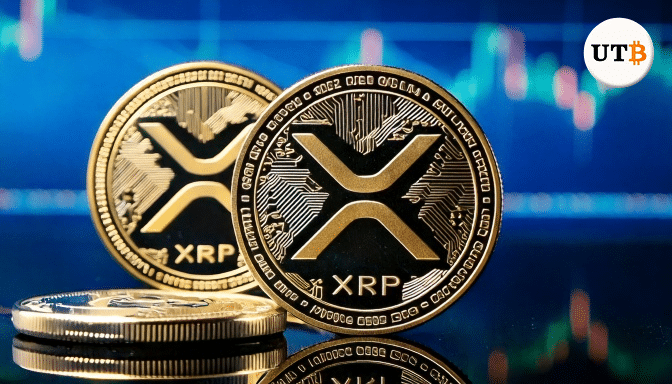Key Takeaways
- Staking MATIC lets you earn rewards, like interest, for helping secure the network.
- Polygon uses a Proof-of-Stake (PoS) consensus system, where validators are chosen based on the number of MATIC tokens staked. The more MATIC tokens staked, the higher the chance of being chosen.
- There are different ways to stake MATIC, including delegating to validators, using exchanges, or running your own validator node (requires more technical knowledge).
Polygon (MATIC) has launched its zk-EVM and has also been building out Polygon 2.0. But what can you do right now to maximize your returns on your MATIC tokens?
In this article, we will delve into Polygon (MATIC) staking, exploring how you can earn free Polygon tokens through staking rewards.
A Few Reminders
First and foremost, we need to understand a few key concepts about the differences between custodial and non-custodial staking and the significance of MATIC tokens within the Polygon ecosystem.
Custodial staking means that you are handing over your crypto to someone else to stake it for you. This could be okay if you trust the entity to whom you are handing over your hard-earned crypto. However, the whole point of crypto is not to rely on or trust third parties. If the entity you are trusting goes out of business, gets hacked, or the owners decide to rug pull, then you could be left with nothing, so remember, not your keys, not your crypto.
With that said, some of the biggest platforms that offer custodial staking include Coinbase, Bitstamp, Binance, KuCoin, OKX, and several others, depending on your jurisdiction.
About Polygon (MATIC)

It is important to note that 12% of the 10 billion MATIC’s total supply is allocated to fund staking rewards, and the current staking reward percentage for staking Polygon is 4.95% annually.
If you are new to crypto, one other important thing to note is that MATIC and Polygon are not interchangeable terms.
When someone uses the term “MATIC tokens,” they colloquially refer to Polygon tokens. The distinction may initially seem confusing, but these two terms are linked within the Polygon network.

Polygon used to be called the “Matic Network” before they rebranded to “Polygon,” and according to their whitepaper for Polygon 2.0, they are planning to rebrand again and do a 1:1 swap out for MATIC tokens for POL tokens.
About Polygon Staking
You can stake Polygon from various wallets, including hardware wallets like Ledger or Trezor. You can also use other hot wallets like MetaMask.
It is really up to you how you want to self-custody your tokens, but the point is that there are many choices, so figure out which one is right for you.

Anyone who wants to stake their MATIC tokens has to delegate to a validator. Delegators earn rewards for their staked tokens relative to the amount of Polygon tokens staked and the length of time you are required to stake, which can vary depending on which validator you decide to delegate your tokens to.
The network does not set a minimum requirement, but validators can choose to set a minimum to delegate and stake on their node. Validators can and usually do charge fees for their services as well.
Staked Polygon tokens have an unlocking period of 80 checkpoints, which is usually about 3 to 4 days.
Polygon Staking Tutorial
As I said earlier, you can choose different kinds of wallets to stake, but for this tutorial, let’s follow a step-by-step guide to staking your MATIC token via MetaMask.
Install The MetaMask Extension To Your Browser

Head over to the MetaMask website to set it up as a browser extension and create a new wallet if you don’t already have one.
Set Your Wallet To The Ethereum Blockchain

Once you log into your wallet, connect your MetaMask to the Ethereum Mainnet.
Transfer MATIC And ETH Tokens To Your MetaMask

To stake MATIC tokens, you must have some in your MetaMask wallet. Copy the receiving address from your MetaMask wallet and paste it as the destination address when transferring MATIC tokens from another wallet.
You will also need a bit of ETH for gas fee transactions.
Make sure that the MATIC and ETH tokens you are sending should be on the Ethereum Mainnet.
Visit The Polygon Wallet Suite

Visit the official site of the Polygon Wallet Suite and connect your MetaMask to the Polygon Mainnet.
Choosing A Validator
It is usually a good idea to check out a validator node before you start staking to ensure that you feel safe trusting them with your funds.

Polygon keeps an open list of all validators on the network for anyone to review. Here, you can find information like the total MATIC token staked in each node, the commission they are charging, the number of checkpoints the node is assigned, and its current health status.
Time To Stake Your MATIC Tokens!

Head over to the staking control panel on the Polygon Wallet Suite, click the validator’s name, and then click “Become a Delegator.”

Input how many of your MATIC tokens you want to stake, click “Continue,” and confirm the transaction.
Final Thoughts
You have successfully staked your MATIC tokens and are now on your way to earning those free tokens! However, do note that there are quite a few staking options available, and this guide shows the MetaMask route.
If you liked this article, you may also interested in the following: What Is Polygon (MATIC)? All You Need To Know




























